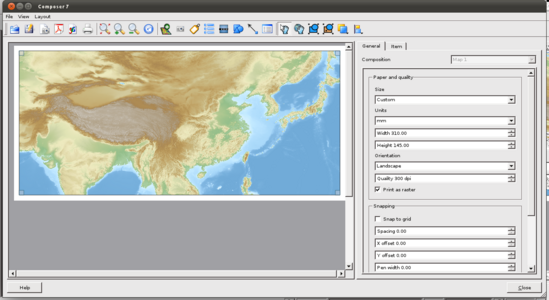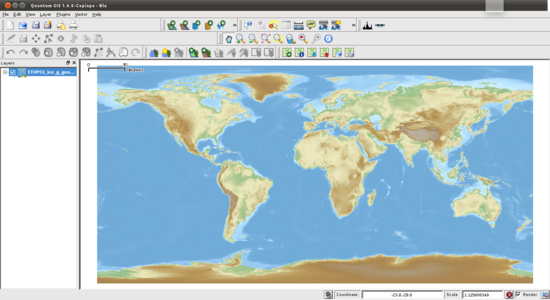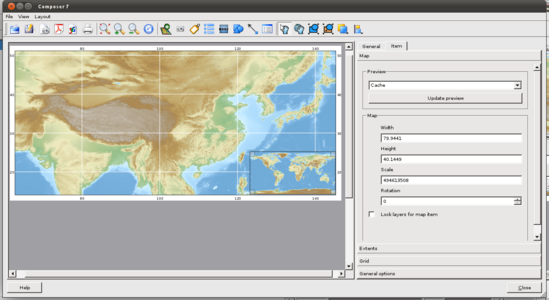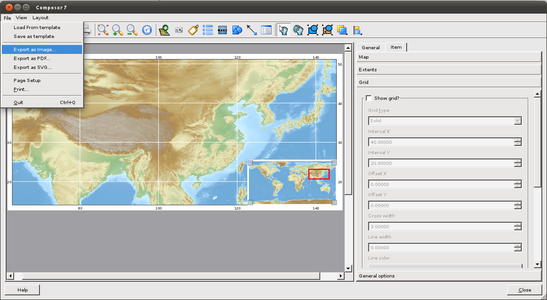Wikipedia talk:Graphics Lab/Resources/QGis lesson : Archives
Appearance
THIS IS AN ARCHIVE. SUPERSED.
Step 5: Output your map, aka using the Print composer
[edit]This section is to redo (update/upgrade)
|
|---|
 You are now working with QGis, your GIS data—namely, ETOPO1—and your customized palette. To output your first topographic background, don't use File > Save as Image, which is a simple screenshot. For better quality, use the Print composer. This step will walk you through outputting a map like the one you see on the right, including a grid and an inset that lets the viewer know where in the world this section is located.
Placing the main section for outputIn the print composer:
Adding a grid
Adding a localizer inset
|
Visual step-by-step
[edit]-
0. Starting point (QGIS, not Print composer): Data are ready an using the correct colormap.
-
01. File > New Print composer (Ctrl+P) > (you have a white page) > icon 'Add new map' > draw the diagonal of the area for your map
-
02. Choice the page size (mm) and quality (dpi) : higher means better quality.
-
03. Centering the map
-
04. Grid tab, add grid.
-
05. Grid tab, add annotations
-
06. Starting point for the localizator BUT white border in the tab : this is troublesome.
-
06. Starting point for the localizator without white in the maptab : Great !
-
07. icon 'Add new map' > draw the diagonal of the area for your map (same than 01)
-
08. Icon 'Add basic shape' > trace a shape > change to rectangle
-
09. Final look.
-
10. Save as png.
-
11. QGis Print composer's Final high quality output (you can zoom in !)













